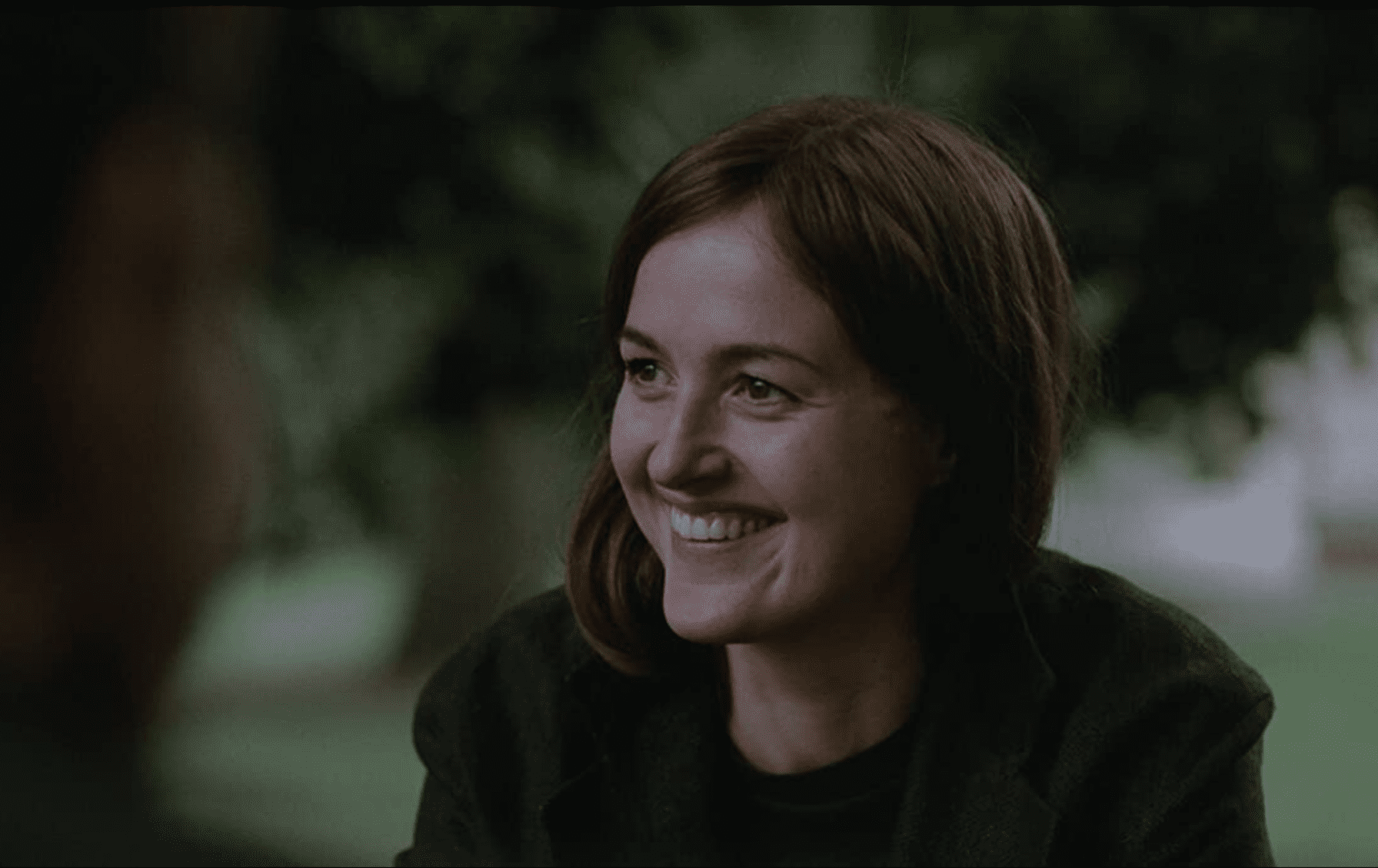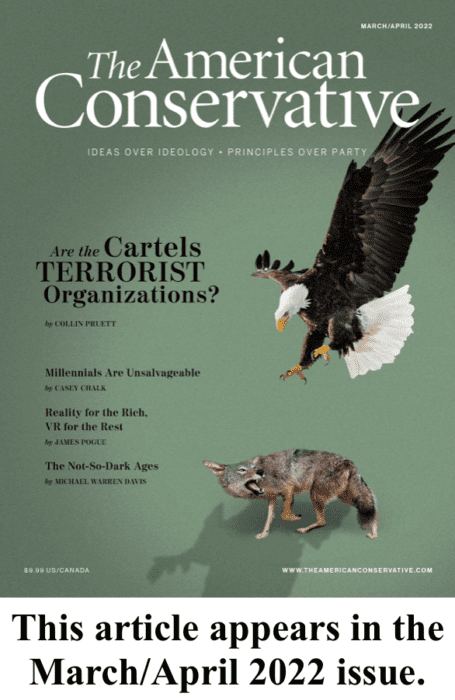The Life of Julie

More than any previous generation, millennials will die alone: unattended by the spouses they never married, unremembered by the children they never had, unconsoled by thoughts of a God they never knew. Having inherited little, they will pass down less.
Dark thoughts like these stalk the edges of The Worst Person in the World, a splendid new film from the Norwegian director Joachim Trier. Julie (Renate Reinsve) is a millennial woman in modern Oslo who slides toward her mid-thirties with no certainty about what she should do or whom she should love. Anything that gives a life lasting shape also limits its possibilities. Choosing one future requires rejecting countless others. Julie recoils from commitment, and so ends up alone.
That is how we see her at the film’s opening—sheathed in black silk, smoking on a balcony with the city stretched out behind her, standing in splendid isolation as she looks at her phone. This image is echoed at the film’s end, when she is looking at another screen—this time a computer in an apartment she shares with no one.
In between, we see Julie try to build a life with two different men. One, Aksel (Anders Danielsen Lie), is fifteen years her senior. The successful creator of an underground cartoon, he believes in transgressive art rather than woke pieties. He is professionally accomplished, able to stand up to Julie’s negligent father, and eager to start a family. He sees himself as a rebel, but he is the last vestige of the bourgeois patriarchy. Julie loves him but leaves him. She feels that she lives too much on his terms, and she wants to live on her own.
The other man, Eivind (Herbert Nordrum), works at the register of a bakery in the Barcode Project, a development in Oslo that has replaced docks and industry with luxury apartments and gleaming office space. Eivind represents a new kind of manhood, one that demands little of Julie and offers her less. He doesn’t make enough to support a family, and he doesn’t want one anyway. Having been mistreated by his father, he has decided not to become one.
Plus, bringing another child into the world would worsen climate change. Before moving in with Julie, Eivind lives with a woman who becomes obsessed with the environment. From her he learns that the mere existence of modern man is killing endangered species and remote tribes. Eivind must give up his dreams of travel, reduce his use of plastics, and carefully check the ingredients in what he buys. There is no escaping self-accusation. When he lived with his ex, “the sum of western guilt sat next to him on the couch, went to bed with him at night.” No wonder he doesn’t want to have a son.
Eivind’s ethic—non-commital and fearful of hurting others—is shared by Julie. In a witty but serious moment she suggests that “hurting someone who’s not your partner” constitutes cheating. Angry at her inattentive father, impatient with her aggrieved mother, Julie knows the risks of intimacy. Love causes suffering. It brings with it the shadow of death, and not just because we injure others and are injured by them. Love requires us to die to self, a foretaste of the death all experience.
Elliott Jaques, a psychoanalyst, coined the term “mid-life crisis” to describe a confrontation with mortality beginning in one’s mid-30s when “family and occupation have become established… parents have grown old; and children are at the threshold of adulthood.”
The Worst Person in the World explores a different sort of midlife crisis, one that many millennials will undergo. They will not face the classic realization that their children are growing up and they are growing old. They will instead confront the fact that they will never attain their image of adulthood. Death will come before they marry, have children, or buy a house.
These facts cannot be reduced to generational flightiness or exaggerated environmental concerns. The middle-class life that was the classic setting of the mid-life crisis has become less attainable for millennials, a fact reflected in Julie’s transition from the financially independent Aksel to the hourly worker Eivind.Soon the majority of my fellow millennials will have turned 35, the age Julie is approaching at the end of the film. The oldest millennials are already in their forties. Social scientists have painstakingly described our low rates of marriage, childbearing, and homeownership. Trier gets at something that is harder to capture: the ambivalent experience of people who came of age in these years.
 It seemed that we could do what we wanted, except form lasting relationships; go where we liked, unless it was home. For no other generation have the possibilities been so limitless and the reality so limited. The Supreme Court proclaimed that anyone could marry, even as marriage became unattainable for the poor. AirBnB opened up houses across the world, even as houses became something that fewer could afford.
It seemed that we could do what we wanted, except form lasting relationships; go where we liked, unless it was home. For no other generation have the possibilities been so limitless and the reality so limited. The Supreme Court proclaimed that anyone could marry, even as marriage became unattainable for the poor. AirBnB opened up houses across the world, even as houses became something that fewer could afford.
Even among those who enjoyed every material advantage, something was lacking. That is true of Julie, who comes from a privileged family in one of the wealthiest countries in the world. In the last shot of the film, Julie is working alone at her computer. Shortly before, we saw her looking at a couple with a young child. This is the contrast with which Trier leaves the audience.
“Except a corn of wheat fall into the ground and die, it abideth alone: but if it die, it bringeth forth much fruit.” We all fear death, but Julie’s fear is paralyzing. She avoids every choice that can narrow her future. To close off any possibility is to approach the moment at which all possibilities end. Because she refuses to die, she will abide alone. As others bring forth new life, she will remain barren.